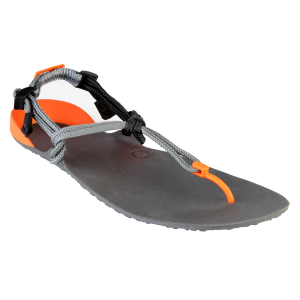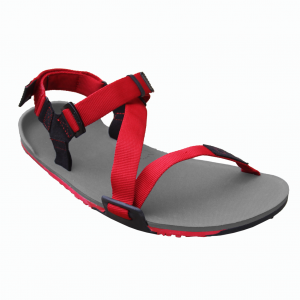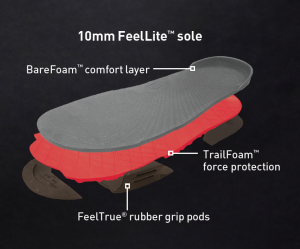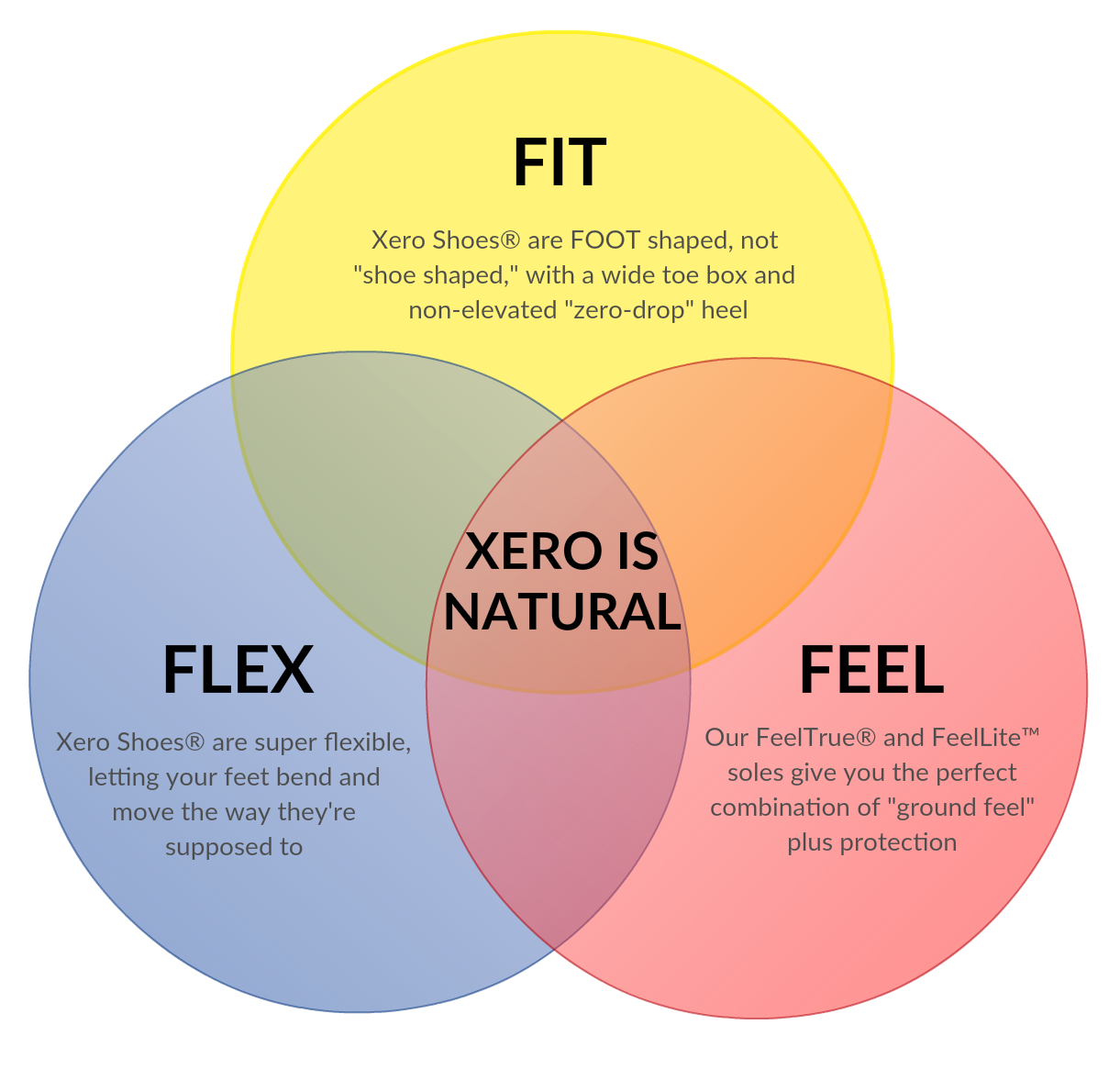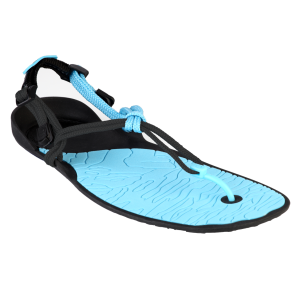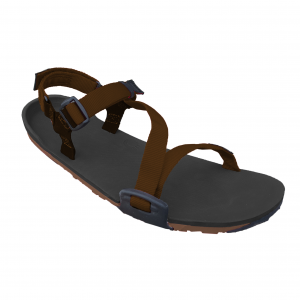“The Best Running Sandal Your Feet Will Ever Love”
What are running sandals?
What if the best running shoes you could possibly wear aren’t shoes at all but running sandals instead? Now, I know some people hear that and they think, “Can you actually run in a sandal?” Well, the answer is yes, but maybe not in the sandals that you’re thinking of. See, if you’re thinking of a flip-flop, it’s not a good idea to run in those. In fact, they’re not even great for walking. Or, if you’re thinking of a big, thick sport sandal like one of this one, below, also not great for running.
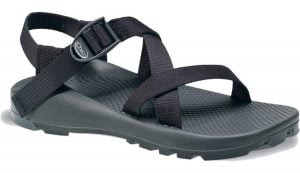
But before I show you what is a great running sandal, let’s just talk about the history of footwear. Sandals are mankind’s first footwear, mankind’s favorite footwear since about 15,000 BC, and pretty much the only option that you had until just a couple of hundred years ago. If you travel around the world and find indigenous tribes, you’ll still find people running in sandals. If you go to Australia, you will find the aborigines often barefoot, but also often in sandals and they will hike, run, walk, everything. They live in them. If you go to Africa, same thing.
If you go to the Copper Canyon of Mexico, you’ll find the Tarahumara Indians who are running in what they refer to as a huarache sandal. Huarache is just the Spanish word for sandal. So they make these with leather on the top and used tires on the bottom with a leather strap. Now, it’s an amazing thing to realize that all you need to hold something securely on your foot, is a three-point construction — something that wraps around your heel, something that holds onto both sides of your ankle, and something around the toes.
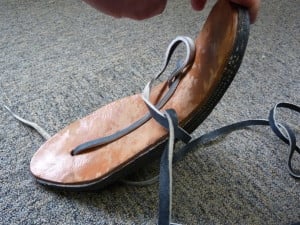
But you’re not going to have to necessarily run in these. There’s a lot of evolution of the running sandal since the Tarahumara started wearing these a while ago. For example, from Xero Shoes, the Amuri Venture, similar idea that three-point design, but a much easier lacing system and much lighter, much more flexible. You can actually make your own running sandals with a do-it-yourself kit where you get the sole that’s right for you, laces in a color that you want, and a bunch of instructions on different ways you can tie those. You can also run in a sport sandal from Xero Shoes that’s ultra-lightweight. Or our Umara Z-Trail, really flexible, really lightweight, perfect for running.
|
|
|
All you need for a good running sandal is the right amount of protection and a way to hold it on your foot that feels safe and secure. That’s it. So in the videos that follow this on the page, you’re going to hear a whole lot more about how you can run in sandals enjoyably, safely, so you can feel the freedom, feel the fun, and feel the world.
Safety
Some people ask about the safety of running sandals. Is it safe to go for a run in a sandal? Well, let’s talk about shoes first. Fifty percent of runners and 80% of marathoners get injured every year. So what are we comparing to? The only thing that we have to do is beat the horrible performance and safety reporting of shoes to answer that question.
Now, when people think about safety, they’re usually thinking of one of two things. First, what about things poking you, you know, protecting you from the ground? Again, people will often think about flip-flops, which is an inappropriate comparison. All I can tell you is there are a lot of options including our Z-Trail sandal, our sport sandal, that give you a great amount of protection. Arguably the perfect amount of protection while still letting you feel the ground. You want to actually feel something. There are more nerve endings on the bottom of your feet, on the soles of your feet than anywhere but your fingertips and your lips, and that’s not an accident. You’re supposed to feel things. It’s good for your balance. It’s good for your agility. You don’t want to get rid of all that feeling. You just want the right amount of protection.
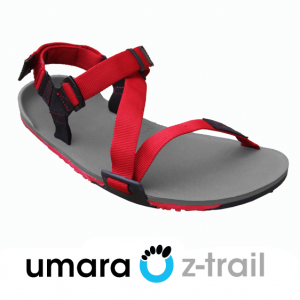
Some people ask about the safety having to do with having your foot being nice and free. Now look, I’ll admit, if you’re out on a trail or somewhere where there’s lots of brush that could be scraping against your feet, shoes may be appropriate or, frankly, just a pair of socks with a sandal. I know that’s not a great fashion statement but, if you want to experience the fun and freedom of sandals, that’s one way of doing that while protecting your feet from the brush that you might be on on trails.
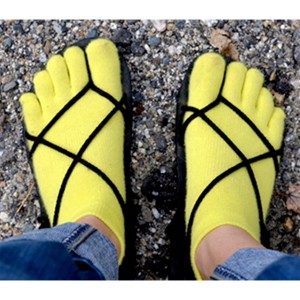
But the other one, sometimes people will go to a gym and the gym will say, “Well, you can’t be in here in sandals. You need a covered shoe.” And now my question is, “Tell me how it is that that fraction of a millimeter of nylon is offering any protection if you’re going to drop a weight on your foot.” It’s not.
Suffice it to say, we have thousands of runners who have put millions of miles on their Xero Shoes enjoyably, safely, and quickly too. We’ve got a lot of people who set personal bests while running in sandals. So, more about that in a bit. Until then, just rest assured safety is not an issue.
Born to Run
Some people wonder why there is this sudden interest in running in sandals or even barefoot, and the answer is really simple: Born to Run. It’s not the album or song by Bruce Springsteen but the book that came out in May of 2009 written by Christopher McDougall.
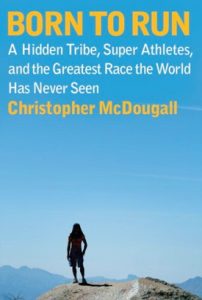
This is a book about the Tarahumara Indians in Mexico who run well into their 50s, 60s and 70s, sometimes for hundreds of miles at a time in a pair of running sandals. They wear huarache sandals, made with a leather top and a used tire for the bottom and just a leather strap that they use to wrap around their ankle. That’s all you need to run. It was that book that really catapulted the movement. And by the way, even if you’re not a runner, it’s an amazing book. It’s a great adventure story. It’s a great science story as well because it talks about the value of getting out of shoes and possibly into something as thin, light and flexible as a pair of sandals.
So that’s what made it happen and we are forever thankful and indebted to Christopher McDougall. Without that book, Xero Shoes wouldn’t have happened and many other businesses as well. So if you haven’t read it yet, you’ve got to read Born to Run.
What are the best running sandals?
So how do you find the best running sandals? The real answer to the question involved is understanding the different styles of sandals and figuring out which one you would like to try.
So the first style based on the oldest design of mankind’s favorite footwear is the huarache style, the thong style. So there is a piece that comes up between your toes, whether it has this toe post like in our Amuri Venture or just a lace or a piece of webbing, it comes up between your toes and then goes around your foot in some way and secures in some way.
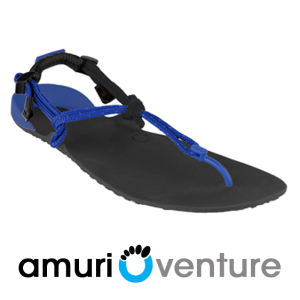
Now, some people will say, “I don’t like things in between my toes,” and they just want to write this style off, but don’t be confused. Don’t confuse these with flip-flops. See, the problem with the flip-flop is that you need to jam your foot into that thong and grip it with your toes to hold that on your foot. Feels really uncomfortable, really bad. Flip-flops are made of horrible materials that break down and wear out, causing postural problems.
But with the huarache-style lacing, what holds this on your foot isn’t the thong; it’s everything that goes around the rest of your foot, around your ankle and heel. So even people who have an aversion to having things between their toes have reported that when they put on this style sandal, it’s way more comfortable than they think. They often don’t notice this at all. That’s the first style.
The second style is the sport sandal style. So this is our Umara Z-Trail sandal and you can see nothing in between your toes and we’re using webbing instead of lace in this case, but you can have webbing on a huarache-style or thong-style sandal as well. Now, don’t confuse these, our Umara Z-Trail for example, with a typical sport sandal, which is big, thick, stiff, and heavy. In fact, three pairs of our Z-Trails weigh less than a pair of the sport sandals.
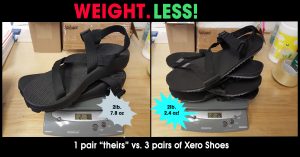
Now, there’s one other interesting thing that you can consider. Both of these are ready-to-wear products. You get them in a size that’s right for you and you put them on your feet and adjust the tension to get the right tension, and adjust your foot forward and backwards so that it’s the right fit, and away you go.
But there’s another option: you can make your own. We have do-it-yourself sandal-making kits. You get a sole that’s the foot shape, basically, and the size that’s right for you, and laces—we have one of 22 different colors of laces—and then there are instructions for how to lace these up in dozens of different styles from the thong style to a sport sandal style. So with a do-it-yourself kit you kind of can get the best of both worlds, plus you develop what I like to call the superpower of knowing how to make your own footwear, also known as the post zombie apocalypse career change, because if you’re the only who knows how to make shoes after the zombie apocalypse you’ve got a brand new business.
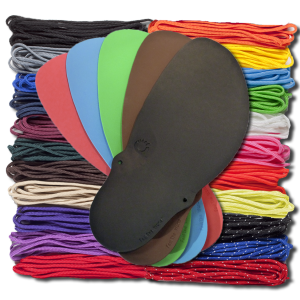
Now, our sandals by the way come in two different thicknesses of our do-it-yourself sandals. We have our 4-millimeter Connect sandal, which is the closest thing you’re going to get to barefoot. It feels like you’ve just replaced the sole of your foot with a little bit of tire tread. Or, we have our 6-millimeter Contact sandal, a little bit more protection, a little bit more durable, a little less flexible.
And that actually brings us to the other characteristics that you want to look for when looking for a good pair of running sandals. Lightness is one. So again, really, really light. In fact, crazy lightweight if you’re going to use our do-it-yourself kit. Weighs next to nothing, couple of ounces. Barely know they’re there. All you can tell is that you feel some protection from the ground.
The second is flexibility because you want your foot to be able to move naturally. Obviously, again, the do-it-yourself stuff – couldn’t be more flexible. If you actually look at the Tarahumara huaraches, these things are kind of stiff as well. If you look at our Venture, this is actually made with the same rubber as our 6-millimeter Contact kit. Very, very flexible.
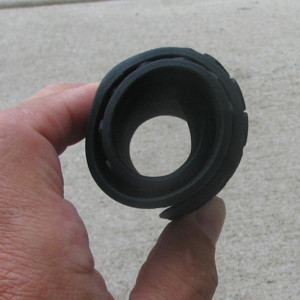
Even our sport sandal is incredibly flexible. We make this with a three-layer FeelLite™ sole that has the rubber on the bottom, our FeelTrue® rubber, then TrailFoam™, and then BareFoam™, and that combination gives you something really, really lightweight and really, really flexible.
But the other thing you have to pay attention to is protection. So what are you running on? What are you running in? You want to have just the right amount of protection. You don’t want to numb your feet completely. You don’t want to not feel things. You have more nerve endings on the soles of your feet than anywhere but your fingertips and your lips. That is not an accident. You’re supposed to feel things. That’s what lets you balance. That’s what makes you agile. That’s what lets you adapt. That’s what lets you frankly have fun because it feels good when you are using your feet properly. So you want the right amount of protection.
Now, if you’re on the road, you can get by with something like our 4-mil sole. If you’re on an aggressive trail, something like the FeelLite on our Z-Trail might be best for you. And if you’re kind of in between, that’s 6-millimeter sole we have on our Contact kit or in our Venture might be just right for you. So think about what you’re going to be on, how much protection you want.
I found something interesting. Many people will start with more protection and then discover that they actually can get by with less and less and less as they get used to having a more barefoot-like experience. So keep that in mind.
Something else you want is durability. You don’t want things that are going to wear out really quickly. Again, if you think about flip-flops, you’re buying a new pair of flip-flops every season because they wear out. We design the rubber in our FeelTrue rubber so that it’s really, really durable. Our soles come with a 5000-mile sole warranty.
Now, that was inspired by the tire sandals from the Tarahumara. People used to ask us, “How long are these going to last?” And we would say, “I don’t know. People haven’t worn them out.” And so we came up with the idea of our 5000-mile sole warranty.
So durability is something you really want to look into. There are a number of running sandals that are made with what’s called blown rubber or aerated rubber that’s from Vibram that is thicker, it’s often stiffer, it’s sometimes heavier—it could be heavier, could be lighter, depends on that particular material—but once you blow air into something to either make it thicker or lighter it’s going to lose some of that durability because the air bubbles essentially pop or compress.
Another thing you want to look into is versatility. What can you do in a pair of running sandals? Well, you don’t have to run in them – you can walk, you can hike, you can stroll, you can paddleboard, you can get in a raft, you can head downriver, you can do CrossFit, you can do yoga. You can do a whole lot of different things, but not in every kind of sandal. So I will confess that the thong-style sandals are not the best if you’re going to be in a river, for example, if you’re fly fishing or paddleboarding or something where you have currents that could move things. The sport-sandal style holds on your foot more securely, gives you a little bit better lateral motion.
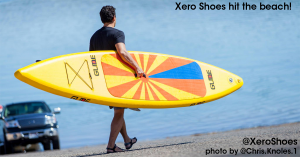
So when you think about versatility, you also want to think about stiffness and protection as well. If you’re going to be going from mountain trails to the beach, then you want something that’ll handle both of those. If you’re only hanging out on roads or sidewalks, then you can get by with, again, a little less protection, something a little thinner.
Last but certainly not least, consider price. Now, price is a deceptive thing because it’s not just the dollar value; it combines with all those other things. So, for example, our Umara Z-Trail sandal, it’s a 79.99 suggested retail price but these things last for a really long time. So compared to sandals that maybe you pay $10 for but you’re buying a new pair every season, if you have something that may last you for four or five years, even if it’s more expensive, it’s a better deal in the long run.
So take a look at all of those options, put them all together, and that’ll help you figure out which is the best running sandal for you. Enjoy! Feel the freedom, feel the fun and feel the world.
A comparison to shoes
How do running sandals compare to running shoes? Let me count the ways because there are a lot of differences that are going to be important to you.
I think that running sandals are the ultimate running shoe. They give you just what you need, no more, no less. Remember, people have been going for a run in a pair or sandals for centuries; the modern running shoe has only been around since the early seventies. I’m not saying that just because it’s old, it’s better, but just because it’s new that doesn’t mean it is either, and we’ll talk about that in a second.
I want to highlight what we call the three pillars of natural that are the principles that we use when we make all of our Xero Shoes products: It’s natural fit, natural flex or function, and natural feel. So let’s go over each one of those.
Natural fit. Look at your average running shoe. It’s got a narrow toe box. It’s not the shape of your foot. Often, it’ll have arch support that doesn’t necessarily match your foot. Suffice it to say, it’s not foot-shaped.
Xero Shoes are made for feet. If you look at our sole shapes, they’re designed so that it’s got a wide toe box, but not too wide. The women’s ones are a little more narrow than the men’s, so we do have different widths. But suffice it to say, they’re wide enough to let your toes splay the way they’re supposed to. We don’t add unnecessary support. We don’t add an elevated heel that can jack up your posture. This is what’s referred to as a nonelevated zero-drop sole so you’re standing with natural posture.
Let’s talk about flex – natural flex or natural function. Your feet are supposed to bend and move. Over a quarter of the bones and joints in your body are in your feet. You’re supposed to use those. Shoes do not give you natural movement. They restrict your feet. We refer to them as foot coffins because your feet pretty much go there to die. So our sandals, not surprisingly, are tremendously flexible. Or even our Z-Trek sandal, our sport sandal, can roll up into a ball. Even our Z-Trail sandal can roll up into a ball, so that you can let your feet move and bend the way they’re supposed to.
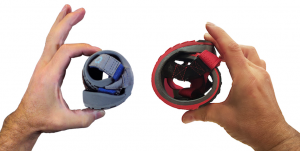
Natural feel. There are more nerve endings on the bottom of your feet than anywhere but your fingertips and your mouth, and that’s not an accident. You’re supposed to feel things with your feet because that sends information to your brain about how you’re moving. Are you moving effectively, efficiently, safely? Are you stepping on something that you want to step on? Is it pleasant or unpleasant? Are you stepping on it in a way that’s good or bad? You need that feedback, and when you put a bunch of padding underneath your foot in a running shoe you lose that feedback.
Our sandals give you different levels of feedback based on what you’re doing. Maximal amount of feedback, real great if you’re on the road, running for example; or trail-friendly feedback, still great ground feel with enough protection so that you can handle aggressive trails. Also, our sandals are really low to the ground, which is really good for balance and agility. When you make these really tall, you know, tons and tons of padding in these shoes, that creates balance issues.
Let’s want to talk about injury. This is an interesting one. There was a study that came out comparing the injury rates of people who are running in shoes versus people running either barefoot or in sandals or in something minimalist, and what they found, they said that there was no real difference in injury rate except that on the shoe-wearing side, one of the injuries that was more common was plantar fasciitis. Somehow they balance that with the non-shoe wearers with stubbing your toe or getting a splinter. It’s a mystery as to how that balances out.
But more importantly, the way that the media spun this story was, “See, there’s no benefit for going barefoot.” It’s like whoa, whoa, whoa, it’s the other way around! Barefoot and sandals are what we’ve been doing for centuries. There’s no improved benefit from going into shoes. That’s the story, especially when you look at the other things that come along with shoes including cost and, again, all those injuries, but let’s come back to that.
You know, you don’t need tons of padding in pronation control. When you put big padding under your heel, Dan Leiberman from Harvard showed that you end up landing on your heel harder that sends this giant spike of force through your ankle, knee, hip, and back. When you get out of those and in a pair of sandals, you don’t create that kind of force and puts less strain on your body.
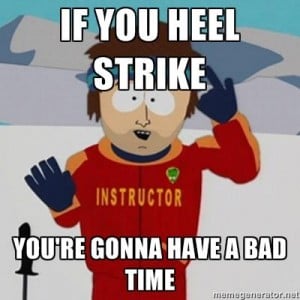
Similarly, your toes and foot, when they don’t move, that’s not good for balance. Your feet are supposed to flex and feel. If you don’t let them do this, that function tries to move to your ankle, your knee, your hip, and your back, which aren’t designed for those things. So when you get in a pair of sandals where your feet can move more naturally, all that stress gets taken off of all of those joints, we think.
The feedback that you get when you’re running in sandals can help improve your running form. Here’s a video showing one of our customers, so you can see the evolution of him as a runner when he just put on a pair of sandals for the first time to running in sandals a few years later, and the evolution is amazing.
And you typically don’t see that, I must say, when you look at people running in shoes. I’m not saying it’s impossible – no, I’m just saying the feedback you get from running in a pair of sandals gives you more information to make those kinds of changes.
There’s obviously a difference in the amount of protection that you get. There’s really simple protection or trail-friendly protection, but the whole issue of protection also moves into things like stability and motion control. There’s no motion control in sandals because you don’t need it in sandals. You need it in shoes because when you have a big padded shoe it makes you land on your heel. Your heel is basically a ball and landing on that is unstable. So they have to add all that extra stuff to shoes, which frankly seems unnecessary. Then, all you need after that is something to hold onto your foot. All the crazy things that many running shoes are doing with their uppers are often totally unnecessary. Sandals give you just enough to hold it on your foot, no more, no less, which is great.
Finally, you can customize them. In fact, you can customize the sandal from top to bottom. You can trim our do-it-yourself kits or our Venture sandal so you get a perfect fit for your unique foot shape. You can also then decorate your sandals if you’re in that kind of mood. You can add a pendant if you like and be kind of spiffy. So if you’re in a decorative mood, you can do that as well.
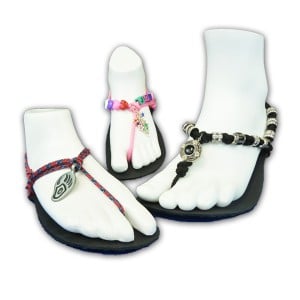
Let’s talk about cost. Sandals cost less than shoes. We make our products, all of our products. Lena and I believe we could charge more because we see other sandal companies charging more than what we charge, and we think our products are better. Xero is one of the only sandal companies who are making products from scratch rather than just stamping things out from existing materials and putting it all together. That’s a whole other story, but, more importantly, compare the cost. Running shoes can be 150, 175, 200 dollars. Our sandals, our do-it-yourself kits start at $19.95, and our products go to about $90 right now with a whole range in between, so you can find a price that works for you.
But the price is not the only factor because it’s price plus durability. Running shoes are made to wear out within three to 500 miles. The materials they use break down. We’re not using materials that break down like that. So our shoes not only cost less but last longer, so the net effect of cost is even lower. We have people who have been wearing their same pair of Xero Shoes for three, four, five years, and our shoes have a 5000-mile sole warranty true to our tire sandal heritage.
Now, look, you don’t have to go running in a pair of sandals, FYI. You can use these for whatever you want. You can use them for hiking, walking, taking a stroll. You can use them as a recovery shoe after you get out of your running shoes because these will let your feet move and bend and flex and get over the fact that they were just in a shoe that requires them to now recover. More importantly, just enjoy them for whatever you like them for. Maybe one day you’ll just be taking a stroll and that’s all you’ve ever done in a pair of sandals, but then you see an elevator that you want to catch and you go running for the elevator, you get in the elevator just in time and go, “Hey, I came in running in these sandals. Alright, I’m going to have to go try that tomorrow.”
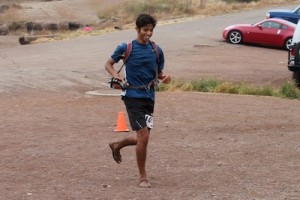
Most importantly, as always, we love to say go out and feel the freedom, feel the fun, and feel the world in your Xero Shoes running sandals.
How Xero Shoes Compare to Luna, Chaco, and Teva
How do Xero Shoes minimalist sandals compare to others like Chaco, Teva, Keen? Well, let’s just say a lot of the other ones don’t do anything minimal. So this is one of the sandals from one of those other companies – big, thick, stiff, heavy. In fact, three pairs of our sandals weigh less than one pair of these in the same size. I’m not trying to compare small to large. And that’s another issue, the big, thick, stiff, heavy soles.
Xero Shoes are designed on what we call the three pillars of natural – natural fit, natural flex or function, and natural feel. So the natural fit, we give you a nice, wide toe box. We don’t elevate the heel like this one so that your posture is correct; we’re not jacking up your hips in a way that’s unnatural.
Natural function, natural flex, that means that our soles are designed so that they let your feet bend and flex naturally. A quarter of the bones and joints in your body are in your feet and more nerve endings in the bottom of your feet than anywhere but your fingertips and your lips, and these are not accidental. You’re supposed to move and bend and flex and feel, and we design our sandals so that you can do that but do it safely. So you get great movement in all of our products. Here’s our Z-Trek nice and rolled up, and of course our Cloud and Venture – crazy, crazy lightweight and flexible.
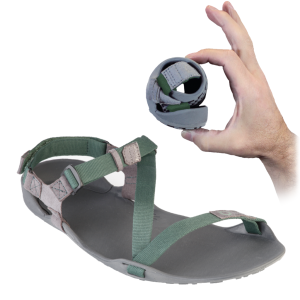
And then the feel, you want to be able to feel the world. It’s important to get sensation, to get feedback from the ground. That lets you know if you’re stepping on things that you should or shouldn’t be. It lets you know if you’re stepping effectively and efficiently. Basically, from the ground up, it’s giving you information about how to move your body and our sandals are designed to let you get that information in ways that other products don’t necessarily do that.
Now, quick comparison to other minimalist sandal companies including someone like Luna Sandals. The biggest difference between our companies is currently, and that’s as of 2016, there are two. The other sandal companies are getting Vibram rubber in big sheets that they’re stamping out so they end up with a flat thing that they then will maybe glue to some leather or some other surface, and then most of them are making a huarache-style sandal. At Luna you won’t find, at least again as of this writing, a sport-sandal style at all.
With Xero Shoes, we’re making everything from the ground up. We designed our own rubber that we call FeelTrue rubber that’s an improvement over the Vibram. It gives you a better combination of grip, of flexibility, of durability, of versatility. With our dual chevron design, you get great traction going uphill, dowhill, fast or slow. The laces that we developed are a round polyester lace, so there are no abrasive points that you can get with some leather laces where they have edges. Similarly, we don’t use leather because leather, when it gets wet, it stretches and gets too flexible. It stretches and gets soft and kind of mushy, then when it dries it gets hard again. What people like about leather is the patina that it can develop. Which is actually dirt and bacteria, so we don’t use it for that reason. We like having a vegan sandal, which you don’t find from every other company.
And what are the other differences? Our sandals are often much lower priced. Durability is the other big difference. Our sandals come with a 5000-mile sole warranty true to our tire sandal heritage. That is unmatched in the industry right now. So that’s why we hope you grab a pair of Xero Shoes.
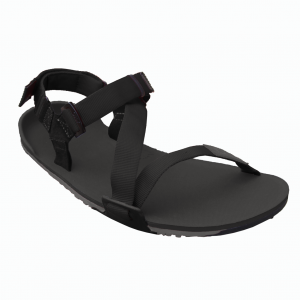
Then we have our do-it-yourself product, where you can get a perfect fit because you can trim these with a kitchen scissors to match your unique foot shape. You can then also decorate them if you like. You can add a bead or charm or pendant, or you can do funky lacing tying styles. There’s a whole bunch of really cool ones at xeroshoes.com/tying. You can even do something like this. We had a woman who painted her toenails and then added beads to match. So there’s a lot of flexibility for expressing your own personality with Xero Shoes too.
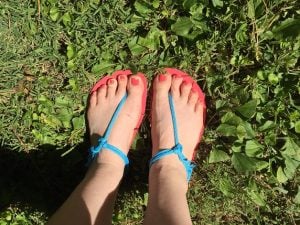
So come on over to xeroshoes.com. Feel the freedom, feel the fun, and feel the world.
Running Marathons
While you don’t have to run in a pair of sandals, I will tell you, running in sandals is a lot of fun and it doesn’t matter what kind of event you run in. I’m a competitive sprinter. To be totally honest, I do all of my warm-ups, all of my drills, and everything up to about 80% of my full speed in a pair of sandals, but after that I need to be in a shoe. I need to have a pair of spikes on because that’s the only way to get the appropriate amount of traction for a hundred-meter dash, which is what I run.
But on the other end, what about running a marathon or what about running an ultramarathon? These can be anywhere from 50 kilometers—36 miles—to 100 miles to even 24-hour races. There are all these crazy-long endurance races that I will never do. But more importantly, the question is: Can you run in sandals in those races?
And the answer is an unequivocal yes. In fact, remember, the way this all started was after people read the book Born to Run and heard about the Tarahumara Indians who would run for hundreds of miles in a pair of huarache sandals like this, made of leather and used tires and a leather strap that goes around their ankles. That made people really curious – what can I do? Especially if you look at people coming out of some of these long races in shoes, their toenails are all black or they’ve fallen off, they’ve got skin coming off their foot especially in a trail race where they’re going in and out of water. Some people at the end of a race, their feet look like hell. But when you see people coming out of a long race wearing a pair of sandals, they seem to look fine. So that made people really interested.
This is Mel and Jon Sinclair and the photo below is them at the end of a 50-mile race in a pair of our Amuri Venture sandals. They have run marathons and other ultramarathons as well. They ran a 256K, seven-day stage race across Madagascar and when they showed up at the starting line with just a pair of running sandals on their feet, people said, “Um, where are your shoes?” They said, “We’re wearing them.” They said, “No, like, you know, shoes.” They said, “These sandals, that’s our running shoes.” They said, “No, like, your backup shoes.” They went, “You mean extra laces? We have extra laces just in case but, I mean, this is all we have.” And at the end of the race, just like I said, everybody who was in shoes and socks who was going through water and then dry spells and uphills and downhills, their feet looked like they had just been in a war, Mel and Jon were totally fine.
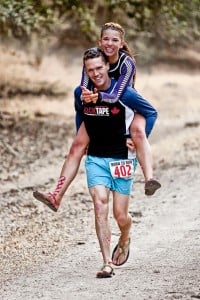
So there’s no limit to what you can do in a pair of running sandals, other than the limit of how much fun you’re willing to have.
How to make running sandals: A DIY
If you’re the kind of person who likes to make things, you might be wondering, “How do I make a pair of running sandals? How do I do a DIY running sandal?”
Look, this is not rocket science or, as they said 15,000 years ago when they invented this idea, it is not rock science. It’s really, really simple. All you need is something for a sole. Could be rubber, like a used tire from a car or from a bicycle.
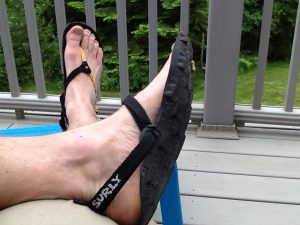
It could be some leather that you find somewhere. It could be pretty much anything, frankly, but I’ll say why you want specific things in a moment. But the idea is first you need a sole, then you need some sort of lace. Could be hemp, could be paracord, could be the polyester laces that we use, could be whatever you can find. The idea is that you want to secure the lace in between your toes, in front of the webbing of your toes. You could just tie a knot right under the sole. Don’t worry about whether you feel the knot because it’s in between your toes and in front of the webbing.
Let’s lay down the world’s basic instructions: You’re going to take the lace and have it go first to the outside edge of the sandal and you want to poke a hole there. That’s basically straight underneath your ankle bone. A little different than that, but that’ll get you started. And then you’re going to wrap the lace around and it’s going to go around your heel, and then you’re going to poke a hole on the inside ankle, the spot underneath your ankle bone, and the lace goes through there.
And then from here, you just want to do some way of securing this extra lace. You can wrap it around what we refer to as the toe strap. If all you did there is just tie that off, that’s an ultra-minimalist design. This is a really fundamental tying style that comes from in between your toes to the outside ankle, around your heel, back to the top, and then it gets tied. More importantly, the simple thing is in between your toes, ankle, ankle, around your heel, and then secure it.
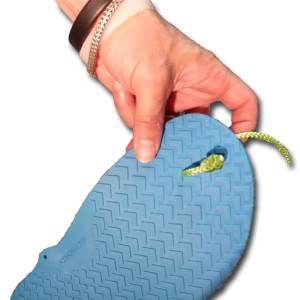 |
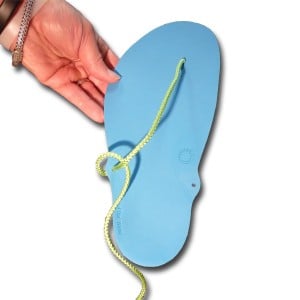 |
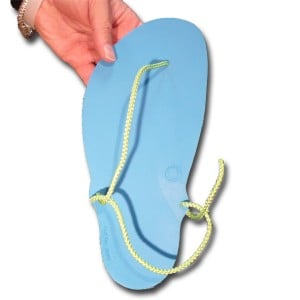 |
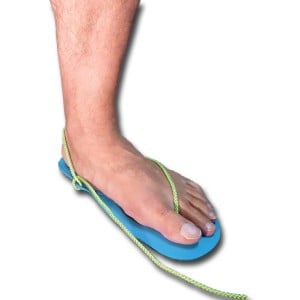 |
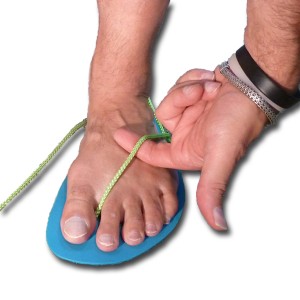 |
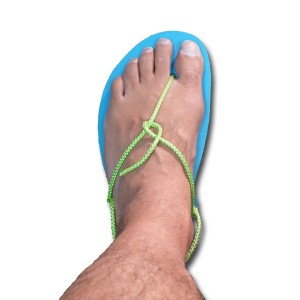 |
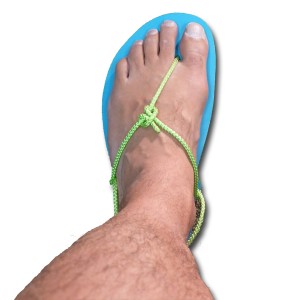 |
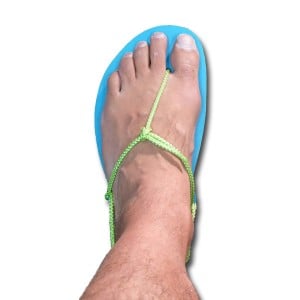 |
Now, we have dozens and dozens of different tying style instructions on our website at xeroshoes.com/tying – you can find those there.
How to tie them: Lacing 101
How do you tie a pair of running sandals so they stay on your feet comfortably and securely during the course of an entire race? Well, here’s lacing 101. I’m going to point you to our website at xeroshoes.com/tying. There are instructions for dozens of different tying styles that include the huarache thong style—and I’ll say more about this one in a second—or styles that are similar to the sport-sandal style, and styles that people have come up with. You know, I think there has been more creativity in the last couple of years since we came out with Xero Shoes than there have been in the 14,994 years since before we started but after they invented the first idea of a sandal that you could use to take a run, but let me give you the basics while we’re here.
Think about it. It’s really simple. We’re going to use the Tarahumara huarache as an example. You’re going to take the lace and you’re going to tie a knot in the end and you’re going to put it through the sole, and this hole goes in between your first and second toe and just slightly in front of the webbing of your toes. That way when you step down, it’s in between your toes and you’re not stepping on that knot.
Now, there are ways of getting rid of the knot that we show you on our website as well, but it doesn’t matter because you’re not going to feel that knot. In fact, if you end up feeling it when you’re running, that’s a form issue. That means that when you’re landing, you’re still moving forward, and so the sole hits the ground first and then your foot ends up on top of the knot, and that’s a good training tip to show you how to change your form so you have better, more efficient running form as you’re in sandals or in shoes, frankly. But anyway, back to the tying.
So then the strap—and you can use again whatever you want for the strapping—comes to the outside of your foot and you’re going to poke a hole here in the sole, and the hole is sort of like basically directly underneath the pointiest part of your ankle bone. There’s some variation in that but that’ll get you going. That’ll be fine. So put a hole there. The lace goes into that hole then comes out through the bottom, and then it’s going to come around your heel and then you have another hole on the inside, also sort of underneath where your ankle bone points, and the lace goes through there.
Now, you can do it through the bottom the way this one’s done or you can come in through the top; really doesn’t matter. It all works out the same in the wash. And then you’re going to hold this extra lace, you’re going to secure it to the toe strap in one of a bunch of ways and then do something with the extra lace. There are ways that you can wrap that around so it just looks decorative around your ankle. There are ways you can use it so it’s just decorative on the shoe. There’s a lot you can do.

But look, here’s the simplest thing I can show you, is if you just made a knot with the lace when it goes around the toe strap, you could cut this off right here and that’s all you need. This ultra-minimalist simple tying style will hold comfortably and securely on your foot for pretty much anything you can imagine doing. It may not feel like it at first. You’re going to be shocked at how much it feels like there’s nothing on your foot. But then as you go for a walk or a run or a hike, you’ll discover that wow, that’s really all you need, this 15,000-year-old idea. They knew what they were doing back then. So that’s one idea. Or, you don’t even need to use a knot. If you want to play around and get some hardware like a tension lock, you can do things like that.
So, more importantly, go out and have fun and experiment. That’s the most important thing. But again, come back to our website. Take a look at the styles that we use. In fact, there are some tying styles on our site that imitate the sport-sandal style on a regular running sandal.
So there are lots of options. I’m sure you’re going to come up with your own. Once you develop the superpower of making your own shoes, your creativity is going to just explode and you’re going to have a lot of ideas. Play with them, do them, share them with us. If you come up with a brand new tying style for your running sandals, we want to see it and we will add it to our website. So go have some fun and we can’t wait to see how you do it.
Reviews
If you’re still not sure that you can go running in a pair of sandals, I totally understand because it can seem crazy since we’re so used to shoes for the last 40 years, forgetting that people ran in a sandal for most of the last couple of thousand years. So what I’m going to suggest is come to our website at XeroShoes.com and look at the different product pages and read the reviews.
I’m just going to highlight my favorite review because this really sums it up, and this is from LIVESTRONG.com. This is from Shelby.
Shelby says:
“These shoes did not seem like they were going to handle much when I first tried them on. A few cleverly placed straps, some thin yet comfortable material for the sole, and nothing more. Forty-five days of daily wear which included hiking over various terrain – beach sand, river crossings, rock, gravel, manicured city trails, and a few trips into the woods with no path at all proved that not only did these shoes hold up to the abuse, they have become my favorite light shoe. The compact minimal design allows them to fit into the smallest pack. Washing them was as simple as a quick spray-down with a hose. These could be used as a trail shoe and still look nice enough to wear later for a barbecue.”
And that really sums it up, in addition to all the great reviews you’ll find from people who are running ultramarathons or just a 5K or just taking a walk or a hike or going to yoga or CrossFit or anything else you can think of. So take a look, you’ll hear from people just like you, and then just give it a shot whether you buy one of our do-it-yourself running sandal kits, looks kind of like this, or one of our ready-to-wear sandals. Here are the Amuri Cloud or one of our ready-to-wear sport sandals, the Umara Z-Trail. You’ll have a lot of fun and I can’t wait to hear what your experience is when you feel the freedom, feel the fun and feel the world.
|
|
|
Where can I buy running sandals?
Where can you buy a pair of running sandals if you’re ready to give it a shot? Well, obviously, I’m going to point you to our website at xeroshoes.com. We ship all around the world. We have sent shoes to:
- South Africa
- Singapore
- India
- Malaysia
- The Philippines
- New Zealand
- Australia
- Canada
- Germany
Along with every state in America, 85 other countries so far.
There are also online retailers and physical retailers all around the world who are selling Xero Shoes and other running sandals. If you go to xeroshoes.com/stores, you will find our current list, which is changing on an almost daily basis. We’re picking up new retailers every day.
So take a look there and give it a shot, have some fun, find a pair of running sandals, and go enjoy.
Read more
If you want to learn more about running sandals, check out xeroshoes.com/shop/product-category/sandals/

